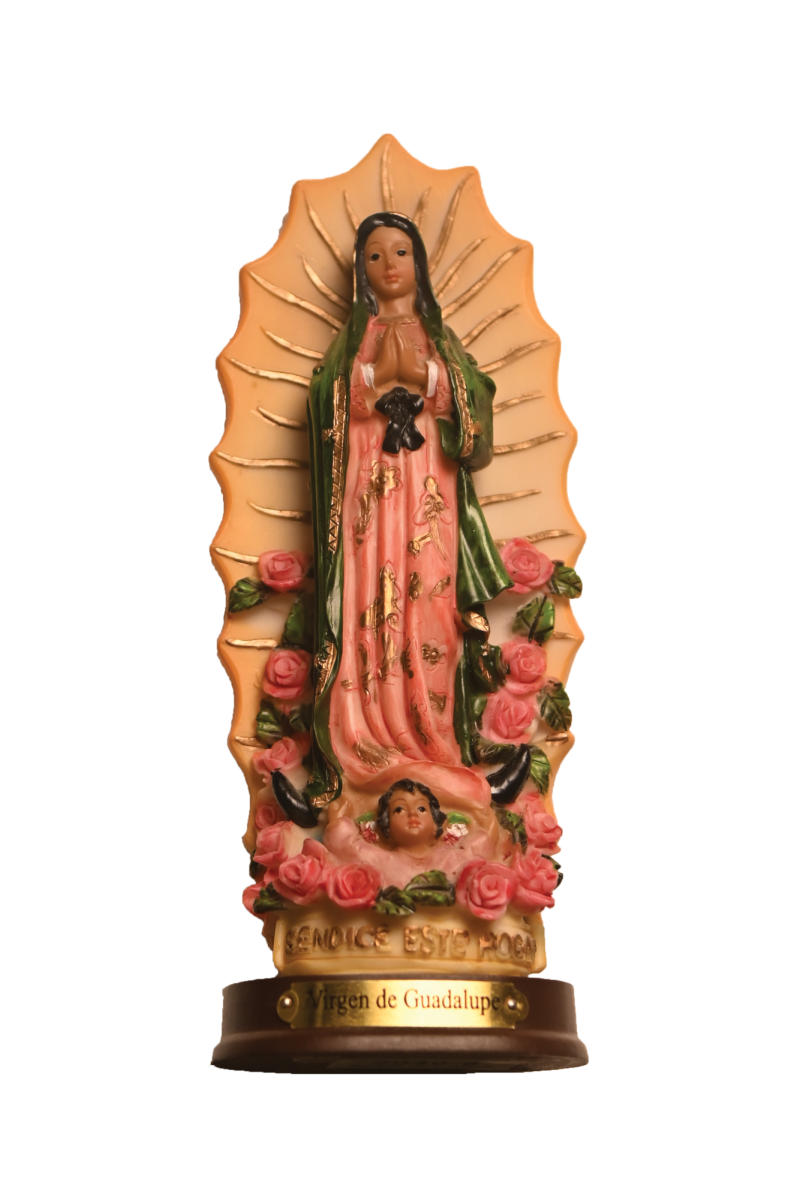
Nevaeh Sturdivant
Statue of Lady Guadalupe
La Virgencita has always held a special meaning in my life. To me, she is a symbol of strength, devotion and hope. She has helped me stay connected to my Mexican roots and Catholic faith.
Who is La Virgencita?
Our Lady of Guadalupe, or La Virgen de Guadalupe, or La Virgencita, holds religious significance in Mexico. The story begins with Juan Diego, an Aztec man who converted to Catholicism, seeing La Virgen Dec. 9, 1531, where she requested that he build her a shrine where she had first appeared to him on the Hill of Tepeyac.
After that day, on Dec. 10, Juan Diego told his bishop, who had a hard time believing him. La Virgen told Juan Diego to collect roses from the Hill of Tepeyac and bring them to the bishop on Dec. 12. Juan Diego used a tilma, or a cloak, to present the roses to the bishop. When he did, the roses fell out of it and on the tilma was La Virgen imprinted on it. The tilma is displayed in the Basilica of Guadalupe in Mexico City.
La Virgen’s features are those of a European and Indigenous woman. When you see her, you see the mantle, sunburst, moon and angel. They all have individual meanings that combine Catholic and Aztec religious practices.
Our Lady of Guadalupe has played an important role in Mexican nationalism and has been used to symbolize strength during wars. Miguel Hidalgo y Costilla, who served as one of the leaders of Mexico’s independence in 1810, used La Virgen to pursue the revolt against the Spanish.
My relationship with Our Lady of Guadalupe
I grew up watching La Rosa de Guadalupe, a drama series about people experiencing the miracles of La Virgen after praying to her. Whenever our schedules allow us to, my mom and I attend a mass in honor of La Virgen’s birthday on Dec. 12. These are typically held at five or six in the morning. Around the fall and winter, we attend rosarios to pray the rosary in honor of La Virgen de Guadalupe. We make different displays for her and sing or have bands play music in her honor.
As a Mexican-American, I often feel disconnected from my culture, especially as someone who has never been to Mexico. La Virgencita and my connection to her have been one of many ways I feel connected to my culture.
One thing that helped me connect more with her was when I dedicated my high school sophomore project to her. I made a shrine for her and spent more than 27 hours on the project. I painted her and made a handmade rosary and hundreds of homemade flowers. Everything I talked about regarding her history, I learned from that project, and having a better understanding of the role that she has played in Mexican culture helped me a lot.
Since I didn’t grow up in a strict Catholic family, my relationship with my religion has always been interesting and never really stable. Since starting college, I have been connecting with my religion again and have felt stronger, but my connection with La Virgencita has never faltered.
La Virgen de Guadalupe continues to be a symbol of strength for Mexicans around the world and for me, especially in such difficult times for our people. As I continue moving forward in college and in my religious journey, she serves as a way to guide me through this, as she has all of my life.